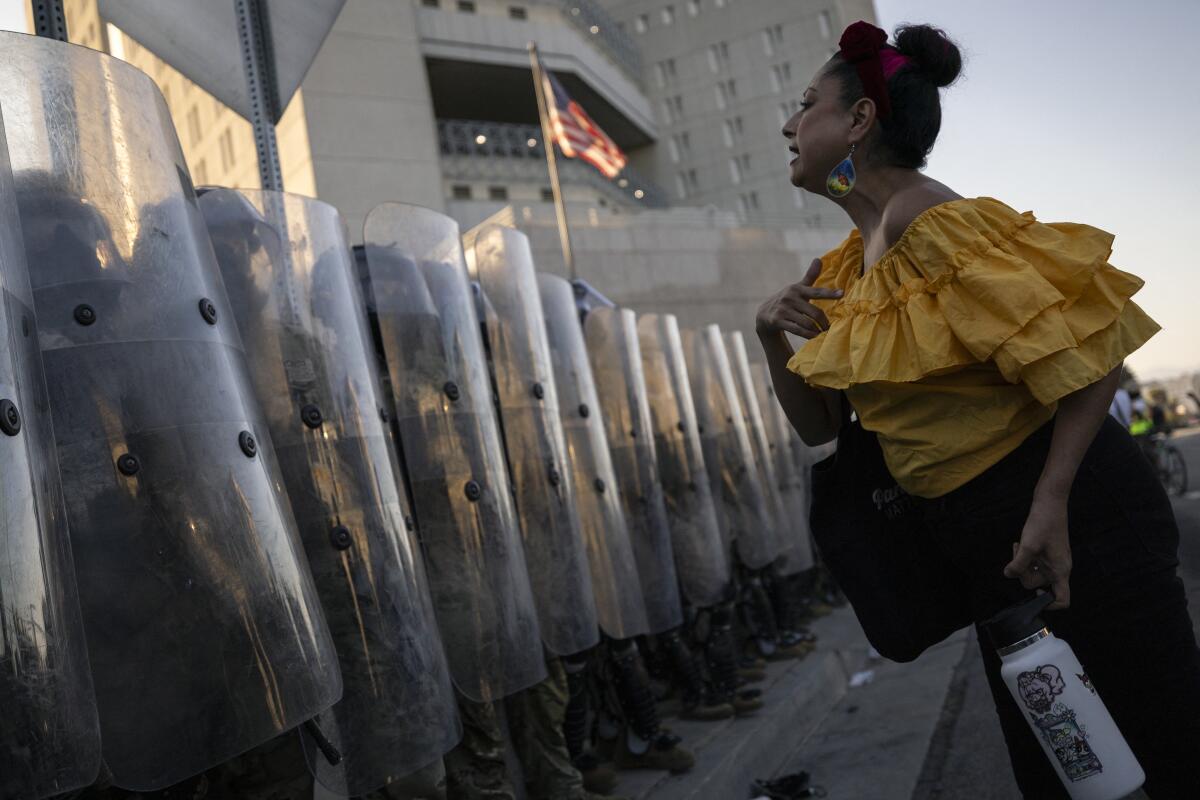Prices jump 56% for Airbnbs in L.A. during the World Cup
On June 12, Peggy Orenstein’s inbox flooded with booking requests for her Inglewood Airbnb.
The date seemed random, but after a quick search, the influx of interest became clear. It was exactly a year before one of the biggest events in American soccer history, when the U.S. will kick off its World Cup in a match against Paraguay at SoFi Stadium, and Orenstein had set up the system to only accept booking requests up to a year in advance.
Orenstein’s rental sits just across the street from the venue. Suddenly, her Airbnb became one of the hottest homes in the Southland.
She hadn’t adjusted the prices yet to reflect the rabid demand, so she declined the requests and tweaked the rates. Typically, a two-night stay at the house would cost around $1,000. For a two-night stay during the Americans’ opening match June 12, it’ll now cost more than $10,000.
Roughly 6.5 million people are expected to travel to North America during the 2026 World Cup, and many of them will be heading to L.A., where SoFi Stadium is hosting eight games, including two U.S. matches during the group stage. Airbnb hosts are viewing the games as a gold mine, hoping soccer fans will shell out thousands to stay near the stadium.
The World Cup rental market will serve as a test case for the 2028 Olympics, when an estimated 15 million people are expected to visit Southern California.
For the night of the opening match June 12, more than 70% of short-term rentals in Inglewood have already been booked, according to data site Inside Airbnb. That’s a 58% increase compared to typical reservation rates on normal days.
Rates are rising as well. On June 1, the average booked rate for an Airbnb in L.A. is $245, according to data platform AirDNA. On June 12, when the U.S. plays Paraguay, it’s $382 — a 56% jump.
In Inglewood, prices are even wilder. Homes that normally rent for hundreds are listed for thousands. The nightly price for a one-bedroom apartment a block from SoFi is typically around $400. On June 11, the day before the game, it’s $713. On June 12, the day of the game, it’s $1,714.
“It’ll be interesting to see how much people will pay,” Orenstein said.
Some hosts use an algorithm to determine their nightly rates, but Orenstein sets the prices herself. She arrived at the $10,000 number by looking at nearby hotels, which are mostly sold out for the nights of the eight World Cup matches.
“The Lum Hotel had a suite available during the World Cup for $1,943. Meanwhile, our house can accommodate eight guests with four bedrooms, plus a kitchen and yard,” she said.
There are classic amenities such as a grill and hot tub, but the biggest amenity is proximity. Orenstein is banking on visitors ponying up for the convenience of parking at the property and walking to the stadium while everyone else navigates traffic jams and long rideshare waits.
“It gets crazy out there,” she said. “I’ve had people offer to pay me $40 to use the bathroom while walking by during a Taylor Swift concert. Our neighbor sold parking spots for $1,000 during the Super Bowl.”

David (pictured) and Peggy Orenstein, run an Airbnb across the street from SoFi Stadium.
(Robert Gauthier/Los Angeles Times)
Colin Johnson has been renting out his home near SoFi Stadium for two years. It’s his actual residence, meaning when someone stays there, he has to book a hotel or crash on a friend’s couch. But he said the payouts are worth it.
“There are so many events and venues around us, why wouldn’t we take advantage?” he said.
A typical two-night stay in the three-story townhouse runs about $600. For the U.S. opening match, it costs more than $3,000.
Johnson said demand is roughly 60% Americans and 40% foreigners, but he expects foreign interest to pick up as the games get closer.
Demand isn’t limited to Inglewood. Luxury rentals across Los Angeles are being booked for eye-popping numbers, according to Mokhtar Jabli, founder of luxury rental platform Nightfall Group.
He’s booked two so far. The first was rented by a Florida client coming to Los Angeles to see Iran play two matches at SoFi Stadium against New Zealand and Belgium. The modern home in Hollywood Hills, complete with an infinity pool overlooking the city, rented for $33,000 for seven nights from June 15 to 22.
The second was booked by a New York client coming to see the U.S. play Paraguay. The 7,000-square-foot mansion in Malibu comes with a movie theater, butler, security and full-time staff. For 10 days, it rented for $100,000.
Jamie Lane, chief economist for AirDNA, expects a surge across L.A. County — not just in demand, but in supply.
“There’s a lot of interest right now in what you can make as a host,” Lane said. “In most cities, there won’t be enough lodging, so that pushes rates higher.”
He added that since Airbnb is the official “Alternative Accommodations and Bookings Platform” of the World Cup, the company is urging people to host. AirDNA has hosted multiple bootcamps around the country for people interested in renting out their homes during the World Cup, teaching them how to furnish homes, how to set prices during the games and more.
Lane expects a boost in listings early next year, which would mirror Paris in the months leading up to the 2024 Olympics, when active listings soared by 40%.
It’s unclear how proactive Southern California cities will be in cracking down on illegal listings as homeowners look to make a quick buck by renting out their rooms. Many cities have strict short-term rental regulations, but haven’t taken the steps necessary to enforce them.
Last year, the L.A. Housing Department estimated that 7,500 short-term rentals were violating the city’s Home Sharing Ordinance, but the city only issued 300 citations.
Orenstein said it won’t be easy in Inglewood.
“You have to jump through hoops to have an Airbnb,” she said. “Apply for permits, do inspections, pay your taxes every month. It has to be done right.”



